Time features
Fraud Detection in R

Bart Baesens
Professor Data Science at KU Leuven
Analyzing time
- Certain events are expected to occur at similar moments in time
- Example: customer making transactions at similar hours
- Aim: capture information about the time aspect by meaningful features
- Dealing with time can be tricky
- 00:00 = 24:00
- No natural ordering, for example 23:00 $<$ or $>$ 01:00?
- Do not use arithmetic mean to compute an average timestamp!
- Example: transaction was made at 01:00, 02:00, 21:00 and 22:00
- arithmetic mean is 11:30, but no transfer was made close to that time!
head(timestamps)
"20:27:28" "21:08:41" "01:30:16" "00:57:04" "23:12:14" "22:54:16"
- Convert digital timestamps to decimal format in hours
library(lubridate) ts <- as.numeric(hms(timestamps)) / 3600head(ts)
20.4577778 21.1447222 1.5044444 0.9511111 23.2038889 22.9044444
Circular histogram
library(ggplot2) clock <- ggplot(data.frame(ts), aes(x = ts)) + geom_histogram(breaks = seq(0, 24), colour = "blue", fill = "lightblue") + coord_polar()arithmetic_mean <- mean(ts) clock + geom_vline(xintercept = arithmetic_mean, linetype = 2, color = "red", size = 2)
Circular histogram with arithmetic mean
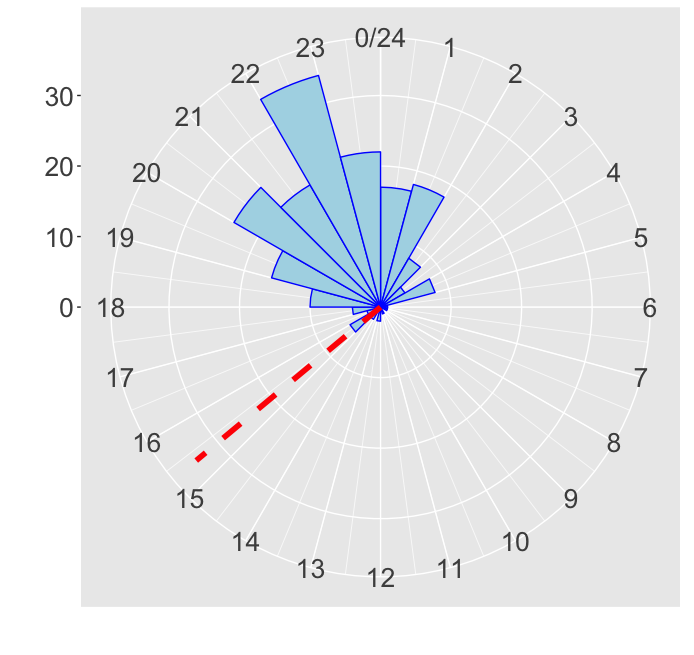
von Mises probability distribution
- Model time as a periodic variable using the von Mises distribution (Correa Bahnsen et al., 2016)
- Periodic normal distribution = normal distribution wrapped around a circle
- von Mises distribution of a set of timestamps $D= $ {$t_1, t_2, \ldots, t_n$}
$$D\sim vonMises\left(\mu,\kappa\right)$$
- $\mu$ : periodic mean, measure of location, distribution is clustered around $\mu$
- $1/\kappa$ : periodic variance; $\kappa$ is a measure of concentration
Estimate parameters $\mu$ and $\kappa$
# Convert the decimal timestamps to class "circular" library(circular) ts <- circular(ts, units = "hours", template = "clock24")head(ts)
Circular Data:
[1] 20.457889 21.144607 1.504422 0.950982 23.203917 4.904397
estimates <- mle.vonmises(ts)
p_mean <- estimates$mu %% 24
concentration <- estimates$kappa
Circular histogram with periodic mean
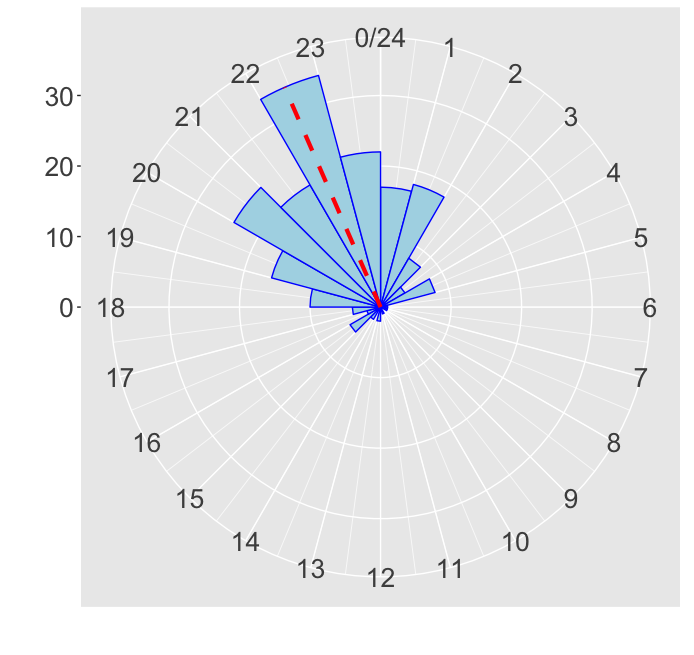
Confidence interval
- Extract new features: confidence interval for the time of a transaction
- $S= $ {$x_i^{time}|i=1,\ldots,n$} : set of transactions made by the same customer
(1) Estimate $\mu(S)$ and $\kappa(S)$ based on $S$ with mle.vonmises():
estimates <- mle.vonmises(ts)
p_mean <- estimates$mu %% 24
concentration <- estimates$kappa
(2) Calculate the density (= likelihood) of the timestamps with dvonmises():
densities <- dvonmises(ts, mu = p_mean, kappa = concentration)
Feature extraction
- Binary feature: timestamp of a new transaction is either in the confidence interval (CI) with probability $\alpha$ (e.g. 0.90, 0.95) or not
- Binary time feature is
TRUEif timestamp lies inside CI and isFALSEotherwise - Timestamp is within 90% CI if its density is larger than the cutoff value:
alpha <- 0.90 quantile <- qvonmises(p = (1 - alpha)/2, mu = p_mean, kappa = concentration) %% 24 cutoff <- dvonmises(quantile, mu = p_mean, kappa = concentration)time_feature <- densities >= cutoff
Confidence interval
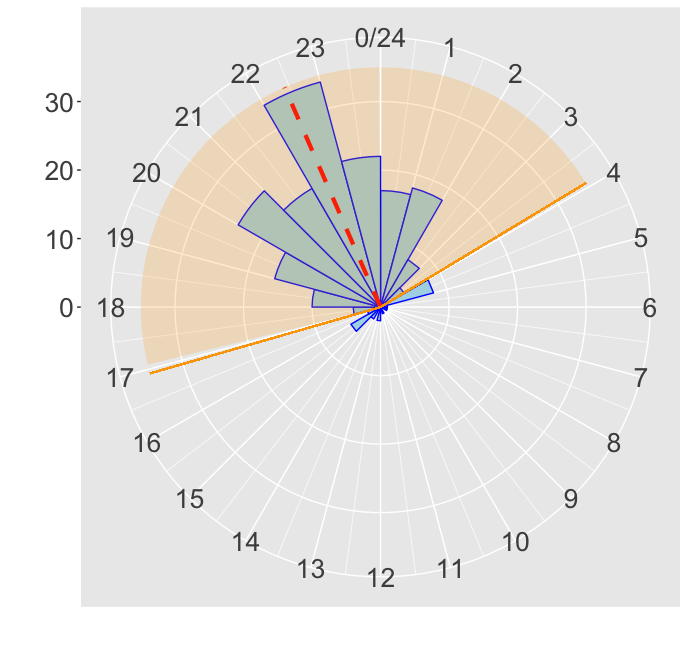
Confidence interval
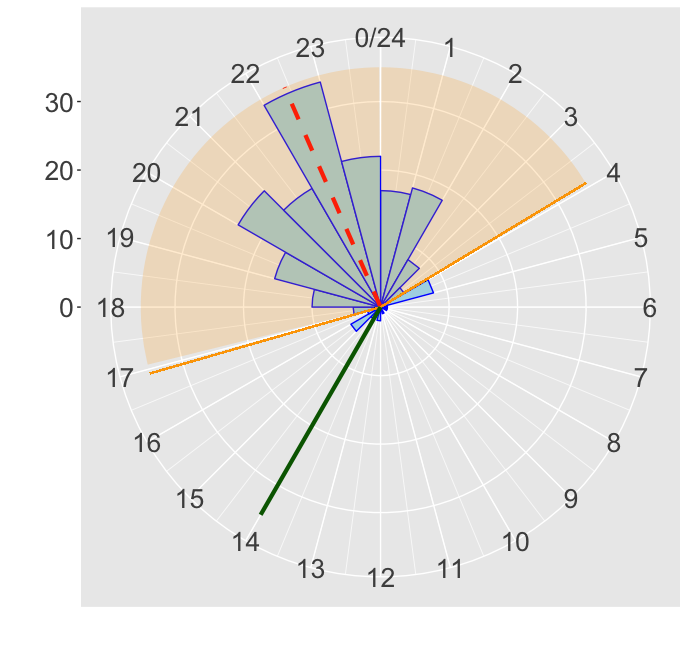
Example
$$
$$
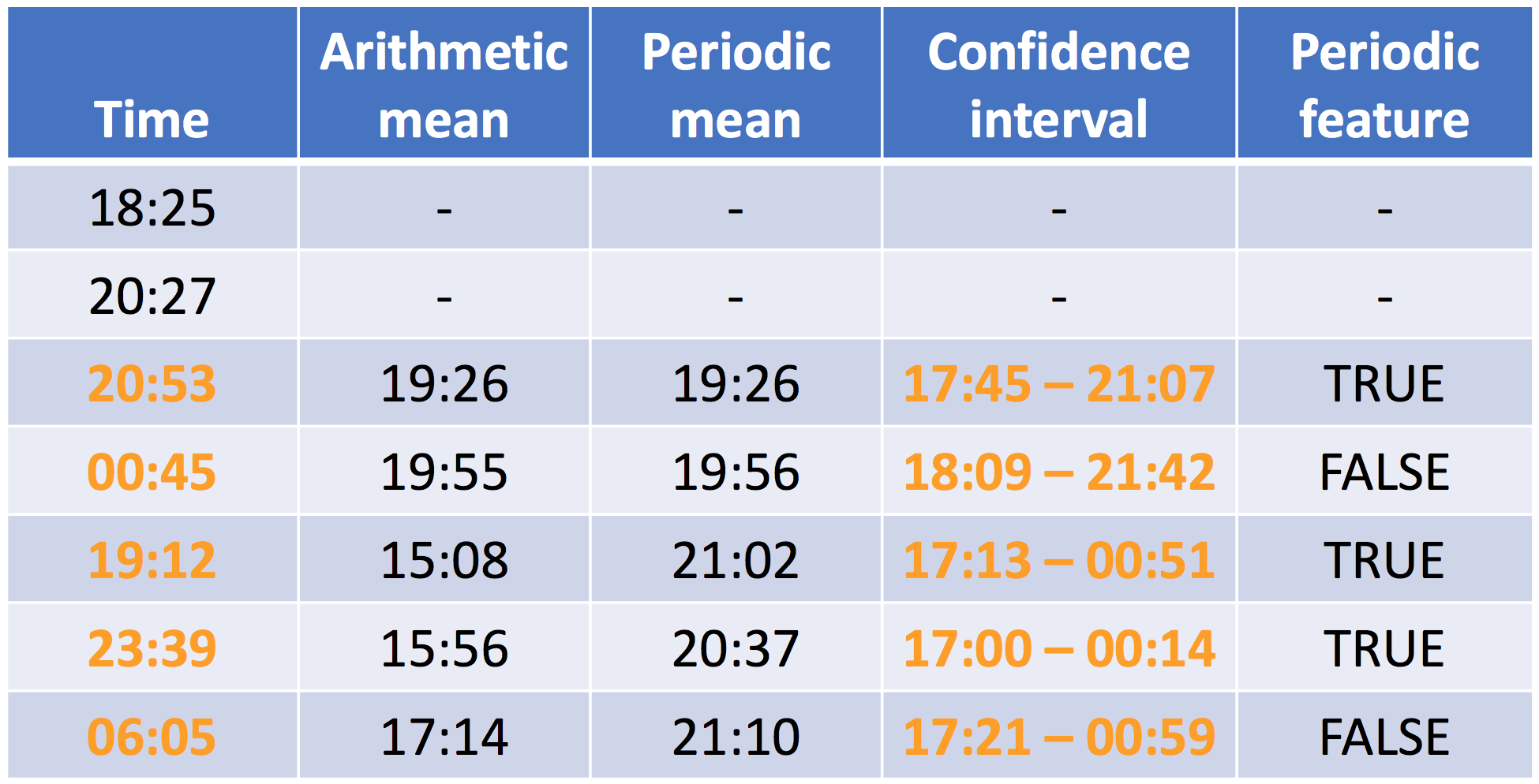
Confidence interval with moving time window
## ts contains the timestamps 18.42, 20.45, 20.88, 0.75, 19.20, 23.65 and 6.08time_feature = c(NA, NA) for (i in 3:length(ts)) { ts_history <- ts[1:(i-1)] ## (1) Previous timestampsestimates <- mle.vonmises(ts_history) ## (2) Estimate mu and kappa on historic timestamps p_mean <- estimates$mu %% 24 concentration <- estimates$kappadens_i <- dvonmises(ts[i], mu = p_mean, kappa = concentration) ## (3) Estimate density of current timestampalpha <- 0.90 ## (4) Check if density is larger than cutoff with confidence level 90% quantile <- qvonmises((1-alpha)/2, mu=p_mean, kappa=concentration) %% 24 cutoff <- dvonmises(quantile, mu = p_mean, kappa = concentration) time_feature[i] <- dens_i >= cutoff }print(time_feature)
NA NA TRUE FALSE TRUE TRUE FALSE
Let's practice!
Fraud Detection in R

